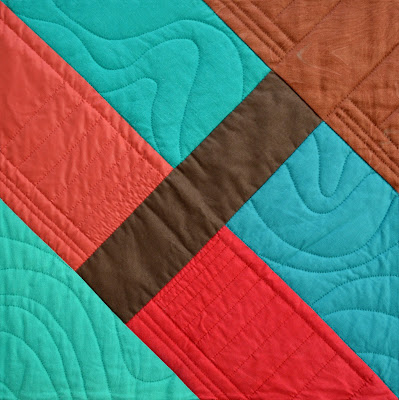Quiltmakers love botanical motifs, even if they are not the best botanists. The applique design in this mid-19th century quilt is uncommon, but I have seen it before. The first time was in 2011, when Lynn Miller visited a local quilt study group meeting in Portland with one she found during her summer vacation in Washington.
 |
| Lynn Miller's quilt, found in Washington state in 2011 |
After seeing Lynn's quilt, I learned Barbara Brackman
blogged about the motif in 2010 when Terry Clothier Thompson released a reproduction pattern called "Strawberry Patch" based on an antique quilt in Thompson's collection.
 |
| Barbara Brackman blogged about this motif in 2010 |
Brackman's blog included a reference to an image in Hall and Kretsinger's "The Romance of the Patchwork Quilt in America" Plate XXXIV, page 167. In the book, the quilt is called a "Strawberry Quilt" and the caption includes some provenance.
According to the book, the quilt was made in 1876 as a wedding gift for Mrs. Augusta Wehrman from her mother-in-law. The quilt I purchased was made approximately a quarter century earlier. I wonder if Mrs. Wehrman's mother-in-law saw the motif in an older quilt, replicated it and started calling it a strawberry because that's what it looked like to her. I also wonder if the maker actually intended it to represent a strawberry.
 |
| Applique quilt, c. 1850, United States |
After asking around, I discovered I wasn't the only person who did not believe this motif represented a strawberry. Another quilt in my collection, dated 1868 and inscribed with the name Hannah J. Swin has strawberries, and they actually look like strawberries.
 |
| detail, strawberry applique from an 1868 quilt made by Hannah J. Swin, NJ |
When I brought the 1850s applique quilt to the Portland Modern Quilt Guild meeting for show & tell in December, I mentioned how I did not believe the motif was a strawberry. Someone in the audience thought it could be an artichoke. That idea got me thinking...and looking.
I believe it could be a cardoon. What is a cardoon? It is a type of thistle, cousin of the artichoke. Cardoons were commonly found in colonial American gardens, according to
a 2009 article published by The Atlantic, "Cardoons: The Farm's Mystery Vegetable" by Anastatia Curley (The Atlantic, July 20, 2009). Click here to read the article.
 |
| Cardoons in bloom. Photo: Lusitana/Wikimedia Commons |
Curley offers one possible reason why the botanical applique motif in my quilt is such a mystery.
"A little research reveals that while cardoons were a common sight in colonial Americans' vegetable gardens, for reasons no one seems able to explain they've fallen out of favor since then," said Curley. "They're still fairly common in France, Italy, Spain and Portugal, but they are harder to find in the U.S."
While searching, I pulled up many photos of artichokes, thistles and cardoons. The mystery applique motifs resembled these plants much more than strawberries. It made sense when I thought more about the quilt. The large scale of the appliqué suggests a plant much larger than a strawberry.
So, do you think the applique motif is a strawberry, a cardoon or something else? Please feel free to comment in the comments section (below).














































